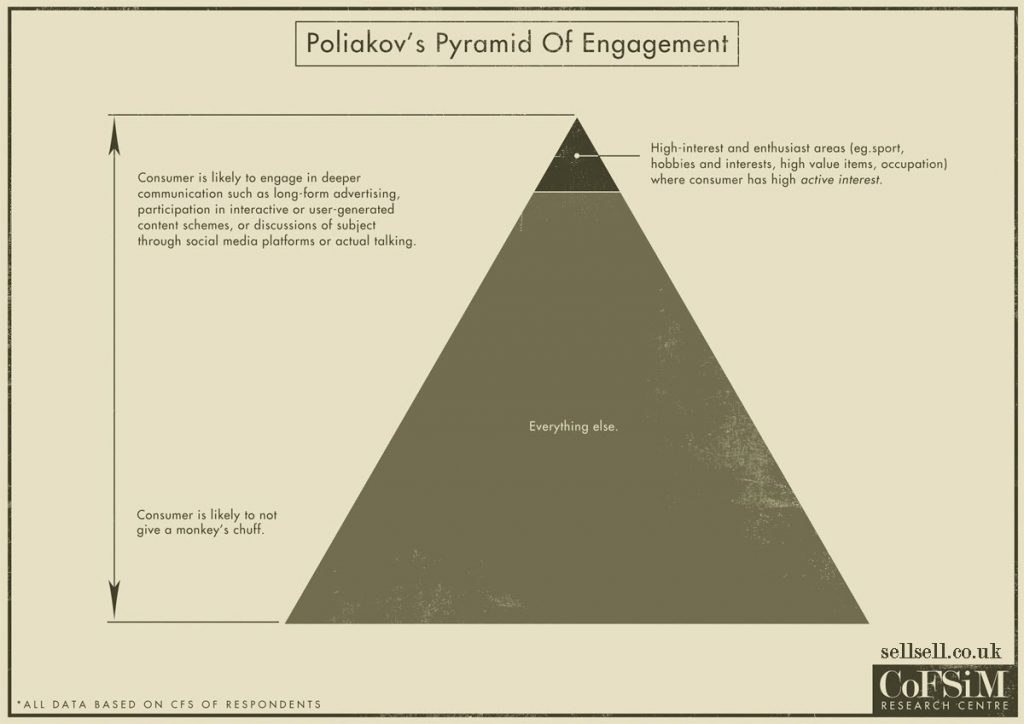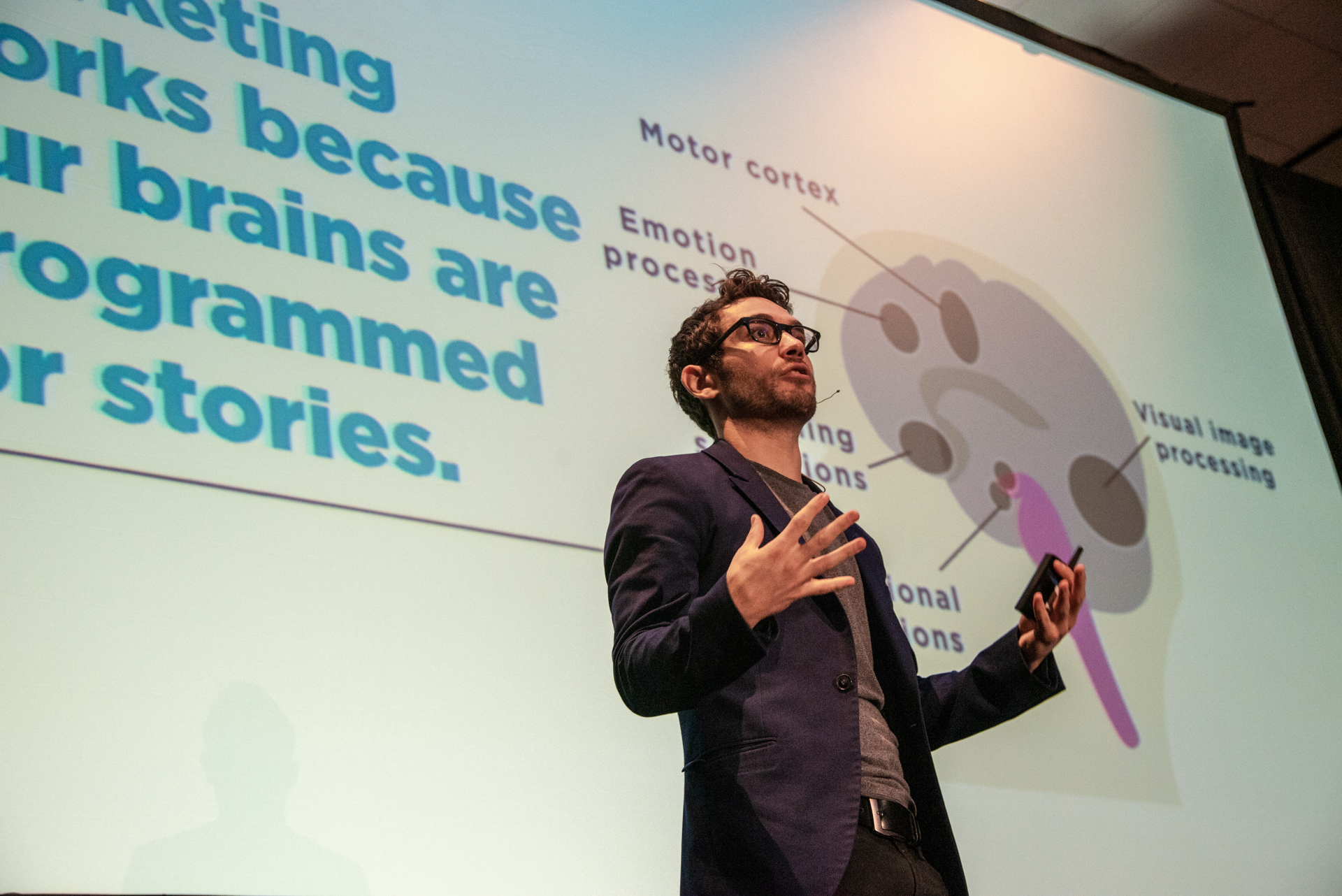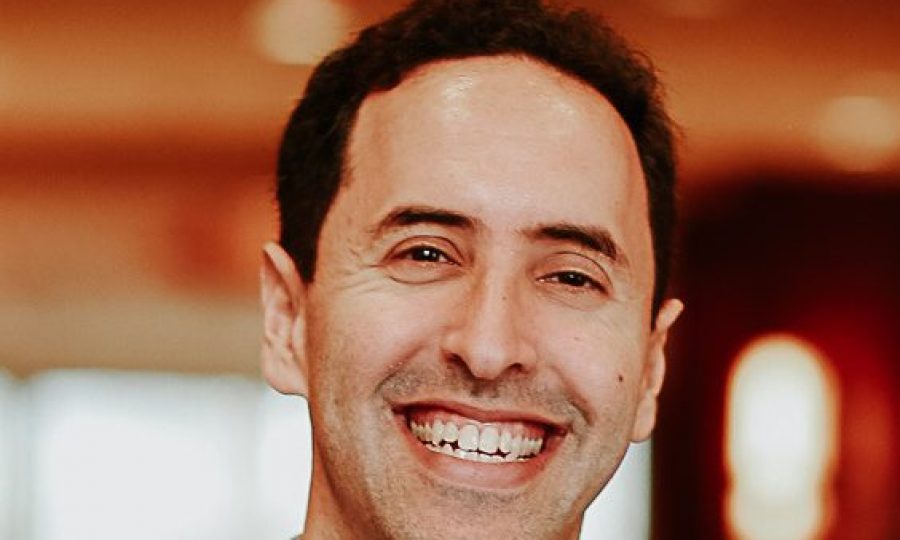Joe Lazauskas is the Head of Content Strategy at Contently. Joe is also a best-selling author with his book The Storytelling Edge: How to Transform Your Business and a regular keynote speaker at several major industry conferences.
In this interview, we cover:
- Joe’s creative process.
- How to produce quality content at scale.
- How writing a book changed Joe’s approach to creating content.
- What Joe’s day to day is like.
- What Joe wishes clients would do more of.
Everyone who knows you, know that you’re a passionate storyteller. How do you approach a brand story? Talk us through your creative process.
It always starts with the audience. What are they interested in? What do they care about? At Contently, we take a very data-driven approach to content strategy, using a lot of home-grown tools to figure out what topics, channels, formats a particular persona is most likely to engage with.
But a big part of the equation is just being empathetic and putting your audience first. One of my favorite marketing charts is Poliakov’s Pyramid of Engagement. At the top are the small number of things your audience actually cares about. It communicates a simple message: content marketing should either help people enjoy their lives more or do their jobs better. If your content doesn’t do one of those things, it probably sucks.

If you’re B2C, help people enjoy their passions better (food, travel, wellness, adventure, self-improvement. Marriott does an awesome job of this.
If you’re B2B, help people do their jobs better. What challenges do they face? What do they need to know to take their careers to the next level?
In both cases, your job is to help people and answer their biggest questions honestly. Don’t just promote your own shit. That’s how you lose people’s trust.
Having that mindset is the most important part. Then, you want to do both quantitative analysis and qualitative analysis (i.e. talking to people) to understand what they’re most interested in.
When we’re coming up with story ideas at Contently, I’m a big fan of good-old-fashioned pitch meetings, where everyone has to bring two story ideas around a particular theme. We have a lot of former journalists here, so that format works well.
With clients, I tend to do more guided exercises in breakout groups, in which small teams of 2-4 work together to come up with story ideas, based on the research we’ve done together.
Quality at scale is a key challenge for many. How do you ensure you produce the highest quality content on a consistent basis? Do you have any hacks you could share with us?
If you follow the above process, I think you’ll get there. I also encourage clients to use the four elements of great storytelling as a checklist.
You recently released your first book, The Storytelling Edge. How has the act of writing a book changed how you create content?
One thing that happens when you write a book is that people want you to speak a lot more at conferences. It makes me seem more legit, even though I’m the same clumsy writer I was a year ago.
I’ve had to develop a few new talks and relate them to the book. It’s given me a reason to keep doing reporting and research on the neuroscience of storytelling, which I’ve been writing about for Fast Company. But I’ve also started to think about keynote speeches as a content type in its own right—and a super important one. A good speech is all about keeping an audience hooked with fun stories, while creating a common goal between you and the audience.
I track which parts resonate best with people, and try to double down on that—in subsequent talks, in videos we make, articles, etc.
Talk us through what it means to be the Head of Content Strategy, Executive Editor at Contently. What’s your day to day like?
I’m basically a traveling content therapist. I go around the country, meeting with clients and potential clients, and help them figure out their problems—whether it’s in a formal workshop or during Happy Hour. This makes my Jewish mother happy because it almost sounds like I’m a doctor.
What’s something you wish clients would do more of?
Take risks and have fun. I always like to tell the story of our Social Media Championship bracket, which our editorial team created one Friday during March Madness. Basically, we seeded the best brand social media accounts, and then pitted them against each other. We did the whole thing over Slack in about 3 hours.
There wasn’t a larger business strategy around it. We just wanted to have some fun and make a lot of dad jokes. But the brands involved got really into it, and they ended up talking to our sales team and becoming serious leads for the company.
Denny’s Twitter account won, by the way. And this will always be my favorite tweet of all time.
happy valentine's day from a restaurant 😉
— Denny’s (@DennysDiner) February 14, 2016

|
|---|


